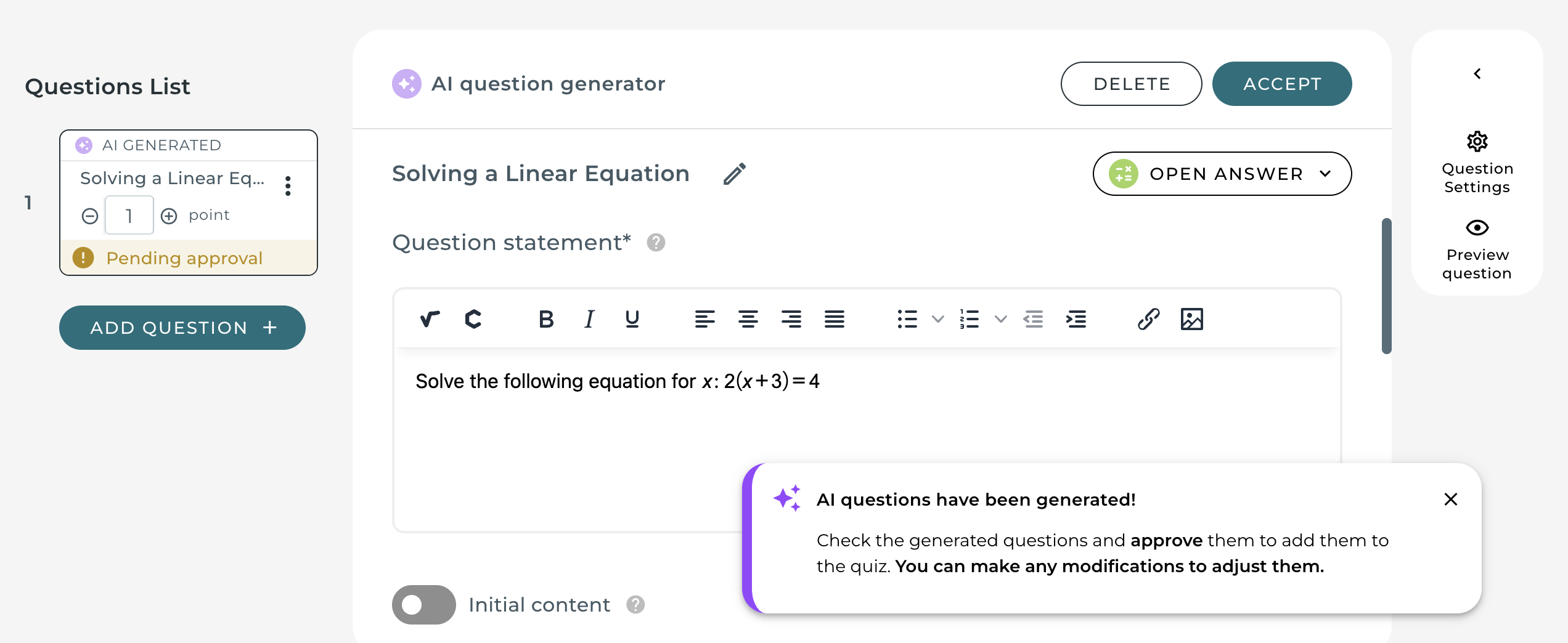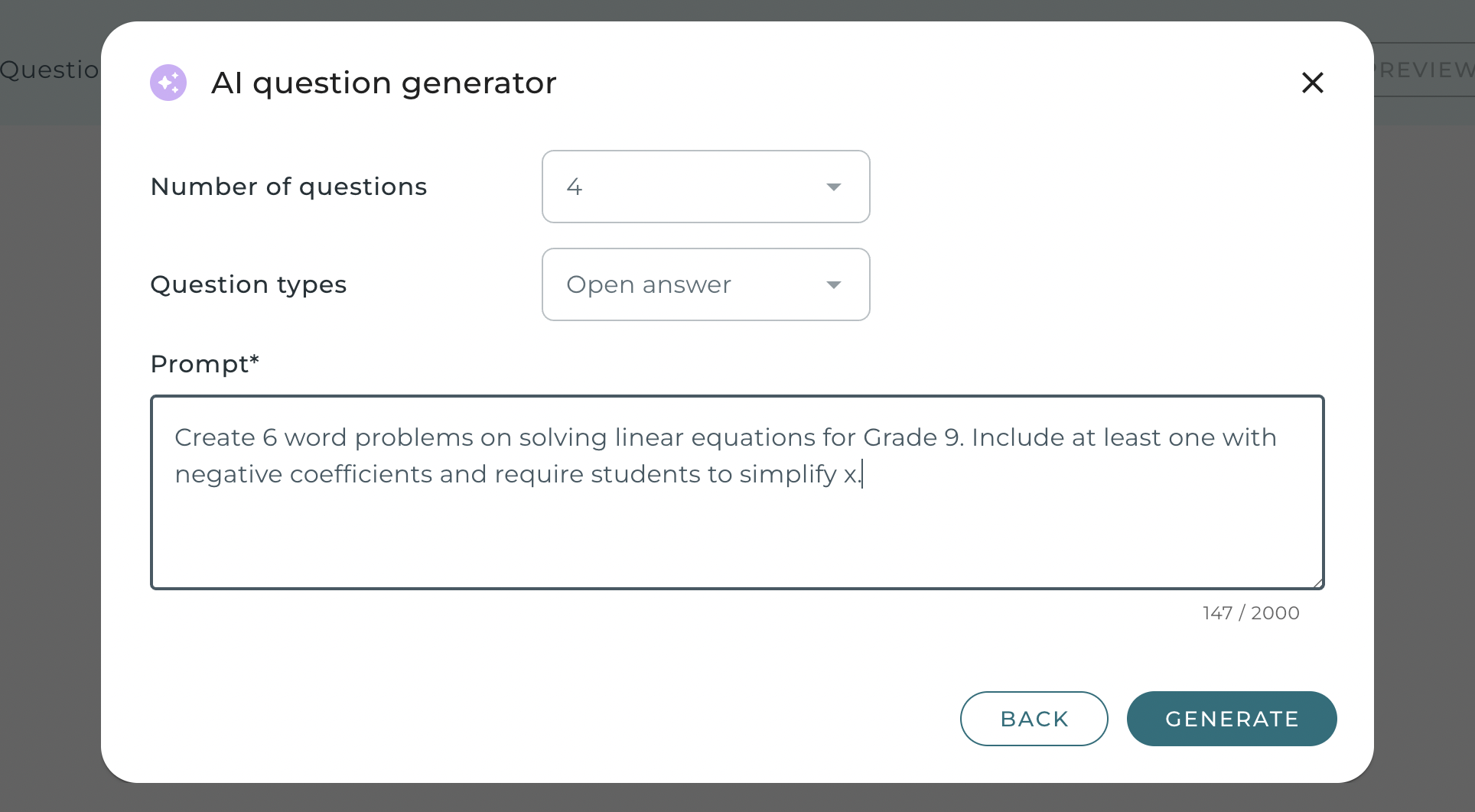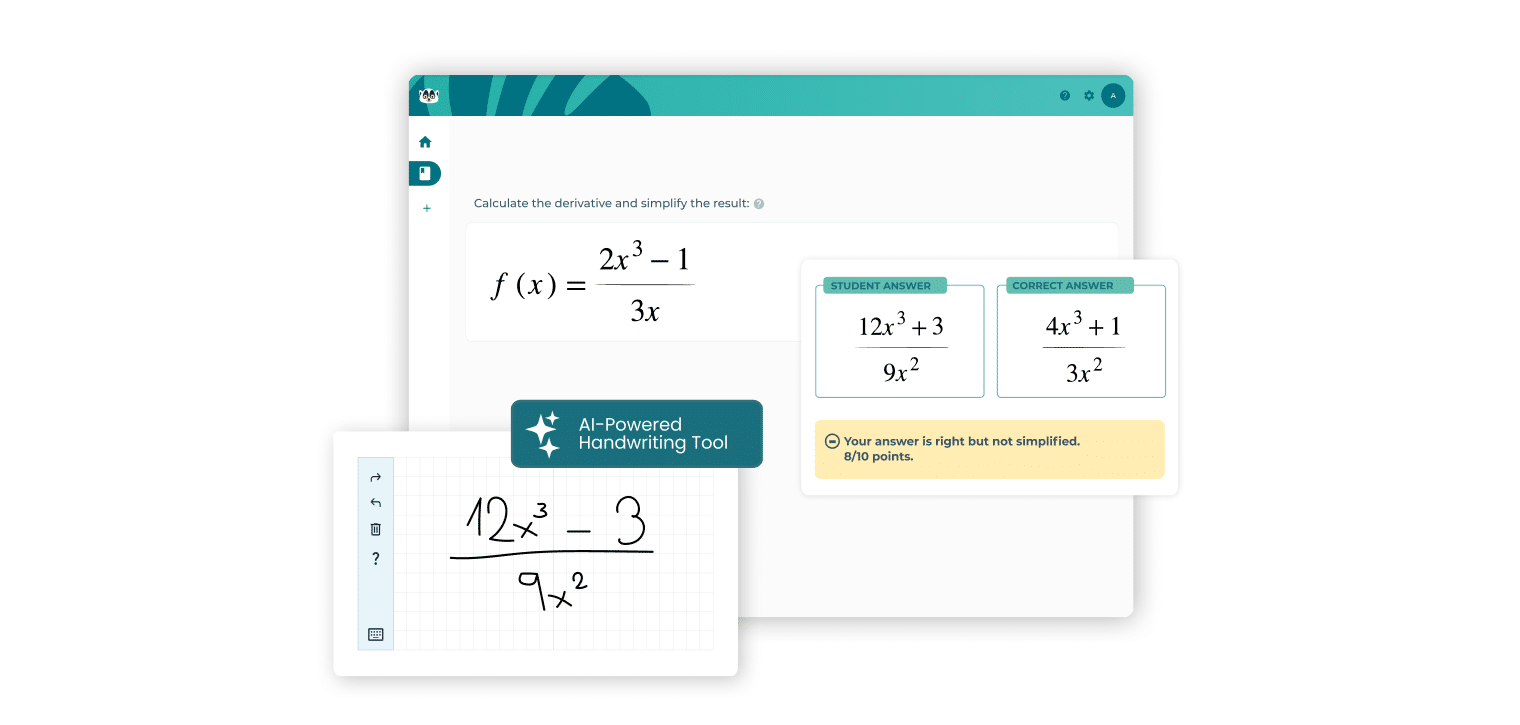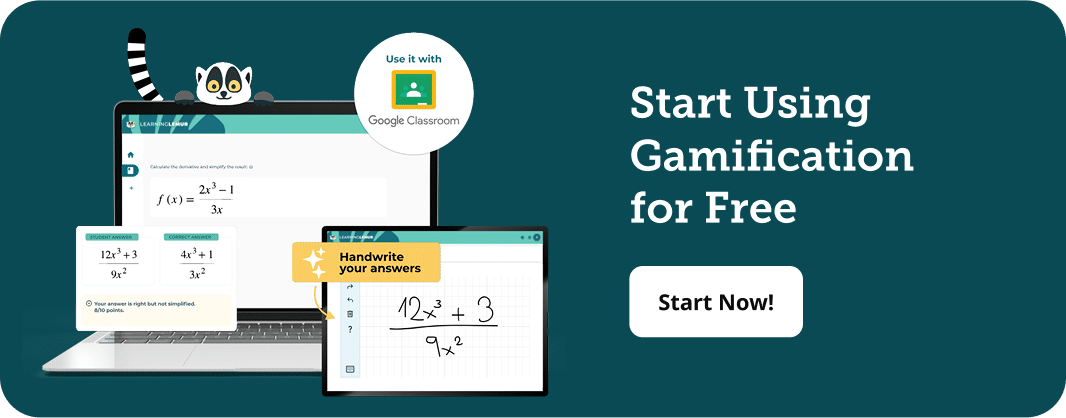Creating engaging and varied math quizzes can be a surprisingly time-consuming task. Teachers often face the dreaded blank page, struggling to come up with fresh problems that match different levels, topics, and student needs. But that’s about to change. With AI for math making its way into classrooms, quiz creation just got a powerful upgrade.
Meet LearningLemur: Your AI Question Generator
LearningLemur is an intuitive math platform integrated with Google Classroom that provides customizable quizzes, automatic grading, and personalized feedback, saving educators time and enhancing student learning. Its extensive library of customizable quizzes and exercises fosters engagement and mastery, while detailed analytics help educators track progress and identify areas for improvement. From simplifying assignment creation to delivering instant feedback, LearningLemur transforms classrooms into dynamic and interactive learning spaces, making math more accessible and engaging for all students.
Now, Wiris has introduced a new feature within LearningLemur: a math question generator that understands your needs and generates ready-made quizzes in seconds. It’s designed to address one of the most common pain points for educators: how to start creating math assessments efficiently without sacrificing quality.
Here’s what LearningLemur’s new AI-powered tool offers:
- Describe the type of questions you want.
- Receive an instant set of customized math problems.
- Edit, refine, and assign them directly to your students.
Forget about starting from scratch. This tool helps you work smarter, not harder, all within a platform that is intuitive and easy to navigate, even for teachers with limited tech experience.

How does it work?
Using this tool is simple and straightforward. Teachers input the number of questions, select the question type (e.g., open answer, multiple choice) and finally provide a prompt (e.g., “Make fractions sum problems for students of grade 12. Ask them to be simplified.”).
The AI handles the rest, offering draft content that aligns with your instructions. And because it’s powered by the trusted Wiris correction engine, you maintain full confidence in the mathematical accuracy.

Why This AI Feature Matters for Educators
The LearningLemur AI question generator isn’t just about saving time. It’s designed to help teachers focus on what really matters: pedagogy, clarity, and curriculum alignment. While the AI handles the generation, teachers can shape the output by ensuring pedagogical alignment with curricular goals, adjusting the complexity and style of each question, and refining the language and clarity for the specific group of learners. This tool does not replace your expertise but accelerates your workflow, allowing you to dedicate more time to effective teaching.
Tips for Writing Effective Prompts
Crafting the right prompt is crucial to getting the most out of the LearningLemur AI for math tool. Think of it as briefing a colleague or delegating to a student teacher. Be clear, be specific, and include the following:
- Specify the exact math topic you want to assess in your students. For example, indicate whether you want exercises on fractions or polynomials.
- Define the educational level or age of your students to tailor the difficulty. Questions should be accessible yet challenging, matching the knowledge and skills of your learners.
- Add any constraints. If you have specific requirements, such as simplifying answers or using decimals only, be sure to include them. This ensures the generated questions meet your pedagogical or exam criteria.
- Optionally, use word problems to add context and generate relatable scenarios. Adding context or real-life situations makes problems more engaging and easier to understand for students. For instance, framing a problem in the context of shopping, travel or science helps connect math to everyday life and increases motivation.
Example Prompts
“Create 6 word problems on solving linear equations for Grade 9. Include at least one with negative coefficients and require students to simplify x.”
“Create 10 questions on simplifying algebraic expressions for 11-year-old students. Include at least one question involving the distributive property and another with factoring.”
“Create 5 questions for first-year university math students on calculating the rank of a matrix using elementary row operations.”
Use Cases in the Real Classroom
The LearningLemur math question generator adapts across levels and contexts:
- For daily practice, generate variations to reinforce a concept.
- For formative assessment, tailor difficulty and format.
- For homework, instantly provide differentiated sets by level.
- For exam prep, create question banks by topic or skill.
And since you can edit anything, it integrates seamlessly into any teaching style.
Diverse Learning Needs: Easily Tailor Content to Students’ Needs
From the teachers’ perspective, LearningLemur offers great flexibility, as educators with limited time or resources in creating math problems can now generate high-quality content more quickly. These advantages are particularly evident for teachers managing large classes, as they can personalize content while reducing preparation time.
Additionally, LearningLemur enables teachers to address the diverse needs of their students by creating customized quizzes and exercises tailored to different skill levels and learning requirements. Teachers can also assign targeted homework tasks, allowing students to strengthen specific competencies where they may need additional support.
Empowering Teachers Through Intelligent Automation
AI for math isn’t about replacing educators: it’s about empowering them. LearningLemur is a clear example of how AI question generators can reduce friction in the creative process while leaving full pedagogical control in teachers’ hands.
Whether you’re battling writer’s block or trying to generate multiple versions of a quiz quickly, this tool gives you a solid head start.





